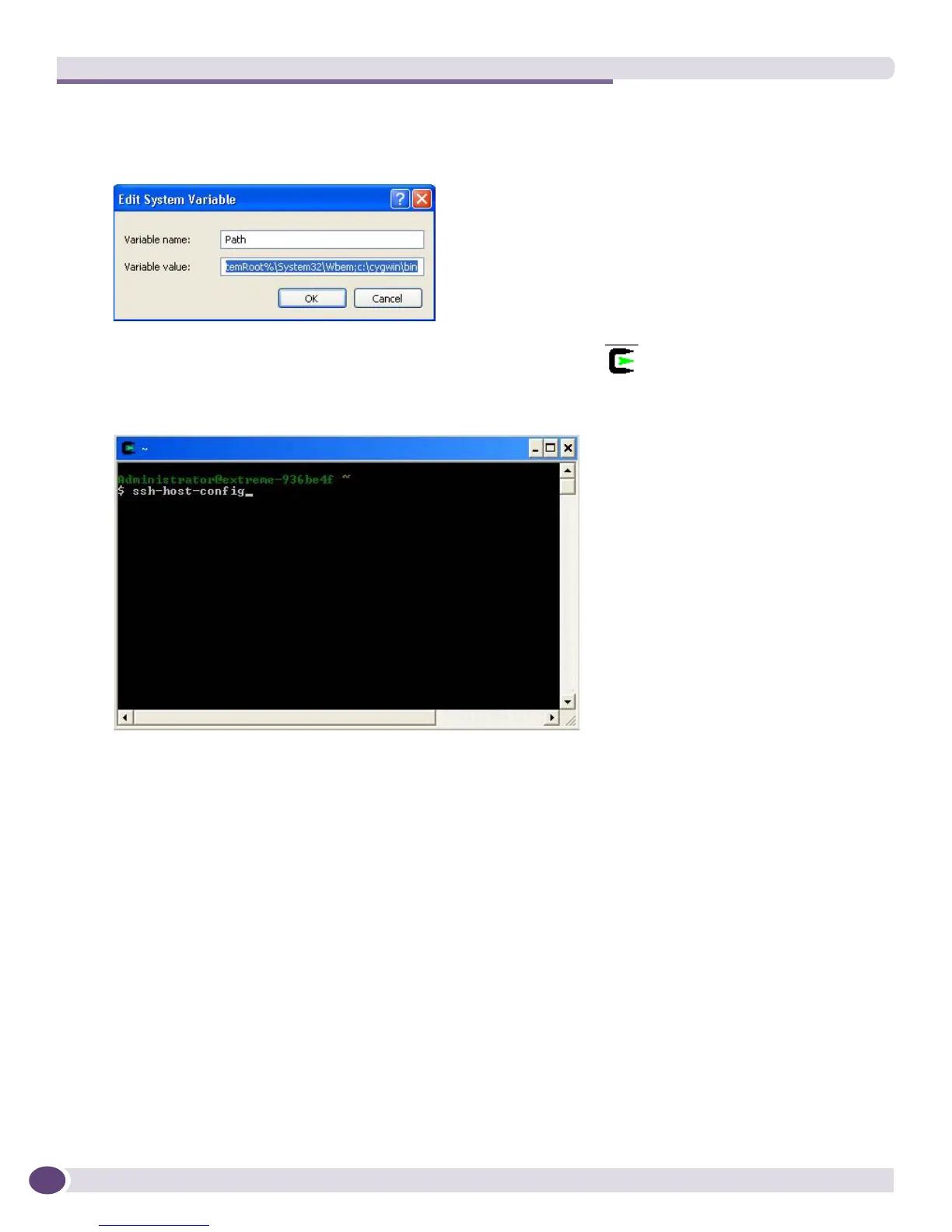Using SSH for Secure Communication
EPICenter Concepts and Solutions Guide
214
15 Append “;c:\cygwin\bin” to the end of the existing variable string.
Figure 90: Modifying the path
Click OK.
16 Next, open a cygwin window (by double clicking the Cygwin icon ). A black window appears.
Figure 91: Configuring the SSH server through cygwin
17 At the prompt, enter ssh-host-config.
● When the script asks about privilege separation be used, answer yes.
● When the script asks about local user, answer yes.
● When the script asks about install sshd as a service, answer yes
● When the script asks for CYGWIN=, answer ntsec tty
18 When the script has finished, while in the (black) cygwin window, start the sshd service by typing
net start sshd.
Step 4: Configure Microsoft Firewall to Allow SSH
Connects
By default the Windows firewall will block incoming SSH (port 22) connections. This section provides
steps to permit port 22 through the Windows firewall on the EPICenter server machine.
If there is an SSH server already running on your server, you may be able to skip this step.

